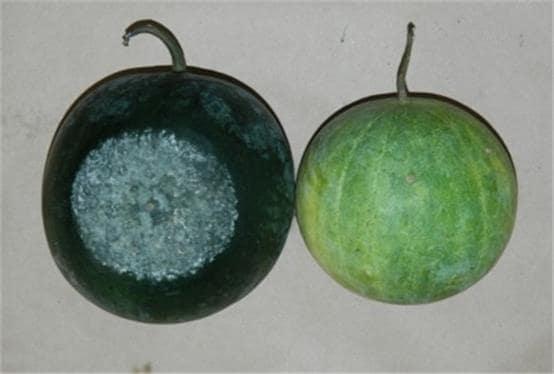Watermelon is a major cucurbit crop grown on over 100,000 acres and valued at more than $500 million annually. A significant portion of the watermelon crop is grown in the eastern United States where Phytophthora fruit rot occurs regularly resulting in severe yield losses. CucCAP researchers in Charleston, SC developed 5 Phytophthora fruit rot resistant watermelon germplasm lines with high levels of resistance against a broad range of diverse P. capsici (20) isolates collected from across the United States. These resistant germplasm lines are being used in breeding programs to develop resistant cultivars.

Phytophthora fruit rot susceptible cultivar Sugar Baby (fruit on left) compared with resistant germplasm line USVL203-PFR (fruit on right). Intense sporulation and growth of the fruit rot pathogen Phytophthora capsici is observed on susceptible cultivar Sugar Baby, whereas no sporulation is seen on USVL203-PFR.
For more reading:
- Broad resistance to post-harvest fruit rot in USVL watermelon germplasm lines to isolates of Phytophthora capsici from across USA.
by: Chandrasekar S. Kousik, Jennifer Lauren Ikerd, William Wechter, Sandra Branham, and William W. Turechek
Published online by Plant Disease on September 27, 2021.
DOI: 10.1094/PDIS-11-20-2480-RE
